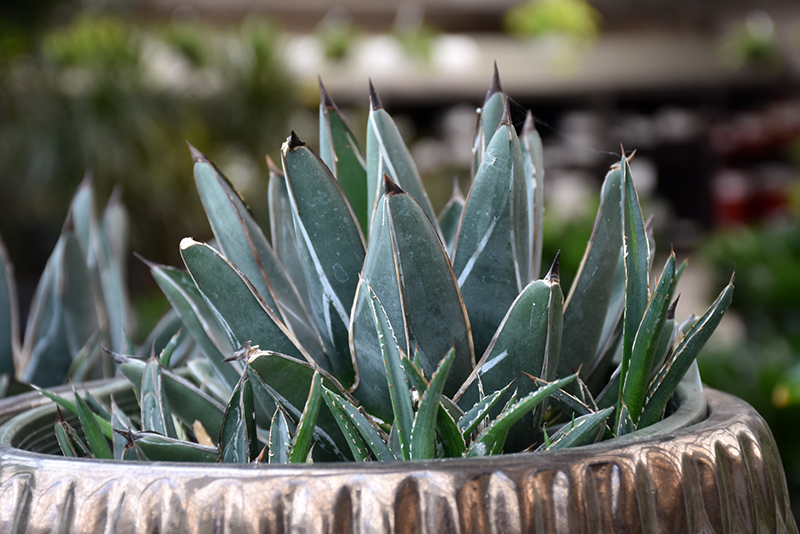King of the Agaves
Description
A symmetrical variety presenting tight fitting blue-green leaves that are edged and striped in white, with black terminal spines; margins are spineless; reddish-purple flowers when rosette matures; produces no offsets, so replace after flowering
Landscape Attributes
King of the Agaves is a dense multi-stemmed evergreen shrub with a more or less rounded form. Its strikingly bold and coarse texture can be very effective in a balanced landscape composition.
King of the Agaves is recommended for the following landscape applications;
Planting & Growing
King of the Agaves will grow to be about 18 inches tall at maturity extending to 15 feet tall with the flowers, with a spread of 18 inches. It tends to fill out right to the ground and therefore doesn't necessarily require facer plants in front. It grows at a slow rate, and under ideal conditions can be expected to live for approximately 10 years.
This shrub should only be grown in full sunlight. It prefers dry to average moisture levels with very well-drained soil, and will often die in standing water. It is considered to be drought-tolerant, and thus makes an ideal choice for a low-water garden or xeriscape application. It is not particular as to soil pH, but grows best in poor soils. It is highly tolerant of urban pollution and will even thrive in inner city environments. This species is not originally from North America. It can be propagated by multiplication of the underground bulbs.
King of the Agaves makes a fine choice for the outdoor landscape, but it is also well-suited for use in outdoor pots and containers. Because of its height, it is often used as a 'thriller' in the 'spiller-thriller-filler' container combination; plant it near the center of the pot, surrounded by smaller plants and those that spill over the edges. Note that when grown in a container, it may not perform exactly as indicated on the tag - this is to be expected. Also note that when growing plants in outdoor containers and baskets, they may require more frequent waterings than they would in the yard or garden. Be aware that in our climate, this plant may be too tender to survive the winter if left outdoors in a container. Contact our experts for more information on how to protect it over the winter months.

